A complete guide to using versatile houseplants as decor for living room corners, including tips on managing large spaces, opening small rooms, and creating furniture accents.
35 Best Indoor Plants for Living Room Corners
Are you ready to elevate your space and introduce beneficial decor into your living room? Then, explore this curated list of 35 plants that thrive indoors.
Indoor plants transform boring areas into eclectic spaces. They add an air of warmth and openness while keeping the air clean in your home.
This guide is divided into six categories based on growing patterns, lighting and space needs, and decor aesthetics. The goal is to provide you with a wide range of options such that it’s impossible not to see one or two indoor plants that fit your preferences and requirements.
Why Plants Belong in Living Room Corners
If you’re not a green thumb, you may ask, “Why use indoor plants?” After all, isn’t it natural to place plants outside in their natural habitat? Well, that’s only one part of the story.
If you’re exploring living room corner decor ideas and have run out of options, you’d appreciate interior plants. They thrive indoors because of their limited light needs and are a safe alternative to pets.
The benefits of houseplants cut across visual appeal to spatial and mental health improvements, as well as a positive environmental impact.
Let’s explore how indoor plants can lighten a room, fill up a room with high ceilings, open up a small space, improve air quality, and beautify a plain living room. Let’s get started!
Low-Light Champions for Dim Living Room Corners
One of the most common indoor vegetation is low-light indoor plants. They’re the right greenery to brighten a dimly lit living room.
People who live in apartments with minimal windows would appreciate this plant category. If you have a poorly lit corner and want to attract sunlight or attention to that area, enlist a low-light champion’s help.
These shade-tolerant houseplants don’t need much light to grow. Up next, here are some of the top plants for dark corners.
ZZ Plant (Zamioculcas Zamiifolia)
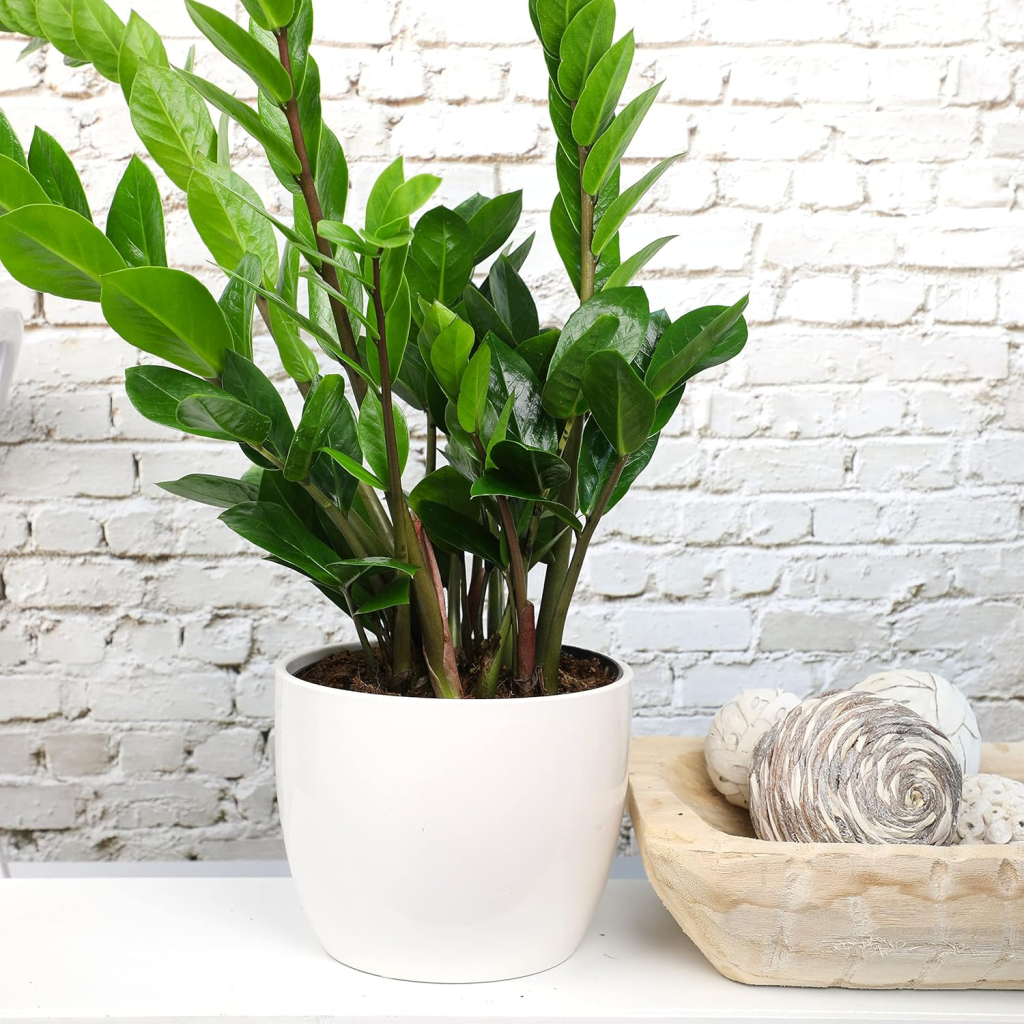
Our first low-light plant is the almost indestructible Zamioculcas zamiifolia, ZZ plant.
Its tolerance to neglect makes it perfect for busy homeowners looking to improve their living room’s aesthetic without the strict commitment to high-maintenance plant ownership.
Snake Plant (Dracaena Trifasciata)

Snake plants, also known as mother-in-law’s tongue, are popular, resilient, and low-maintenance houseplants known for their air-purifying qualities and unique, sword-like foliage. They tolerate a wide range of conditions, including low light and infrequent watering, making them ideal for beginners and busy individuals.
Peace Lily (Spathiphyllum)
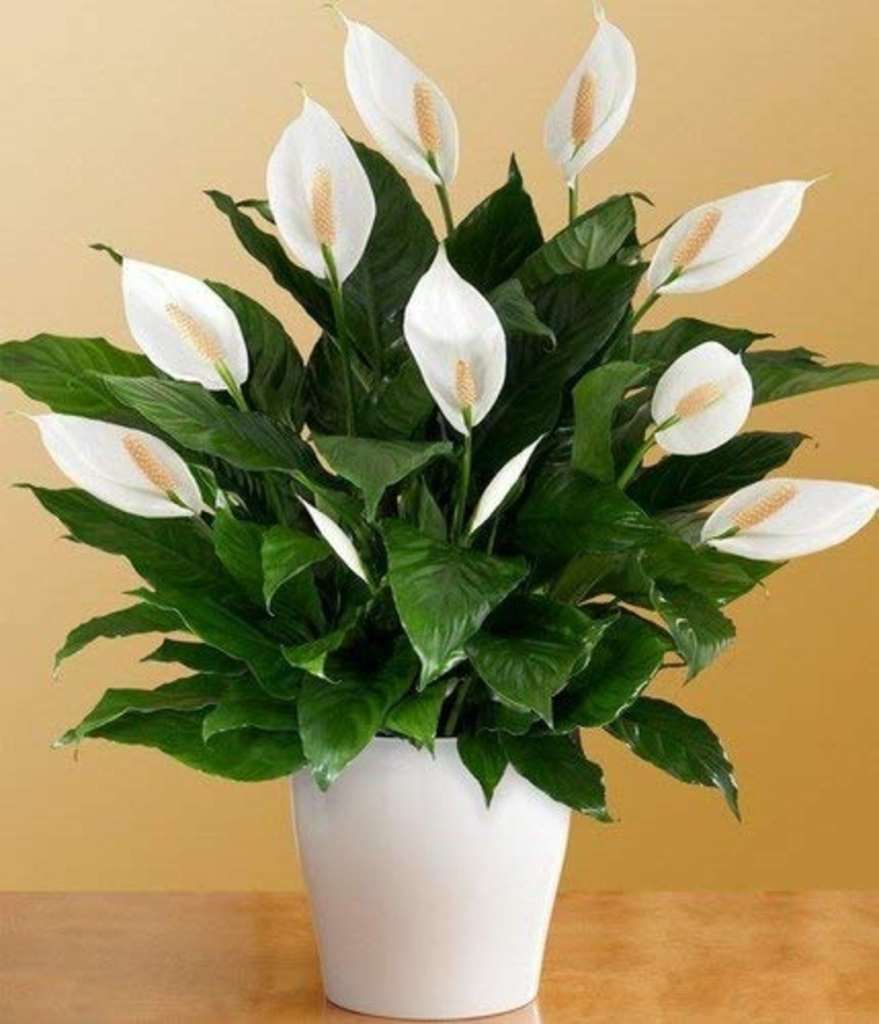
Placing a peace lily indoors is perfect for living rooms with clean aesthetics and minimalist themes.
Despite not being a true lily, this plant’s white blooming flowers have air-purifying qualities and thrive in low-light conditions.
Cast Iron Plant (Aspidistra Elatior)

Another nearly indestructible interior plant is the Cast Iron houseplant.
Like its namesake, this greenery is a durable evergreen that grows in upright clumps. Cast iron plants are ideal for shaded corners with limited space.
Chinese Evergreen (Aglaonema Commutatum)

Speaking of perennials that last throughout the year, let’s highlight the Chinese evergreen plant. This perennial’s lasting nature in low light is the least interesting thing.
With this plant, you’d come for the low-lighting tolerance and stay for its colorful foliage. But caution, the Chinese evergreen plant is considered toxic to humans and pets. It contains calcium oxalate crystals, which can cause irritation and swelling if ingested or if the sap comes into contact with skin.
Pothos (Epipremnum Aureum)
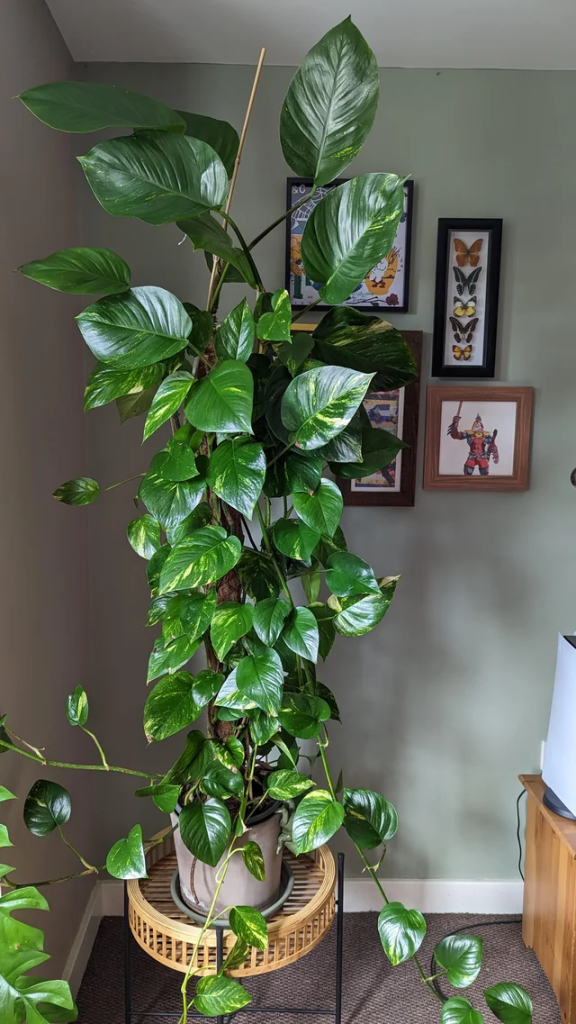
Whether you want to hang your houseplant or place it on a corner shelf, the Pothos indoor plant is always an option.
It grows fast and spreads its leaves over its pot, adding an extra layer of beauty to any corner of your home.
Heartleaf philodendron (Filodendro-brasil)
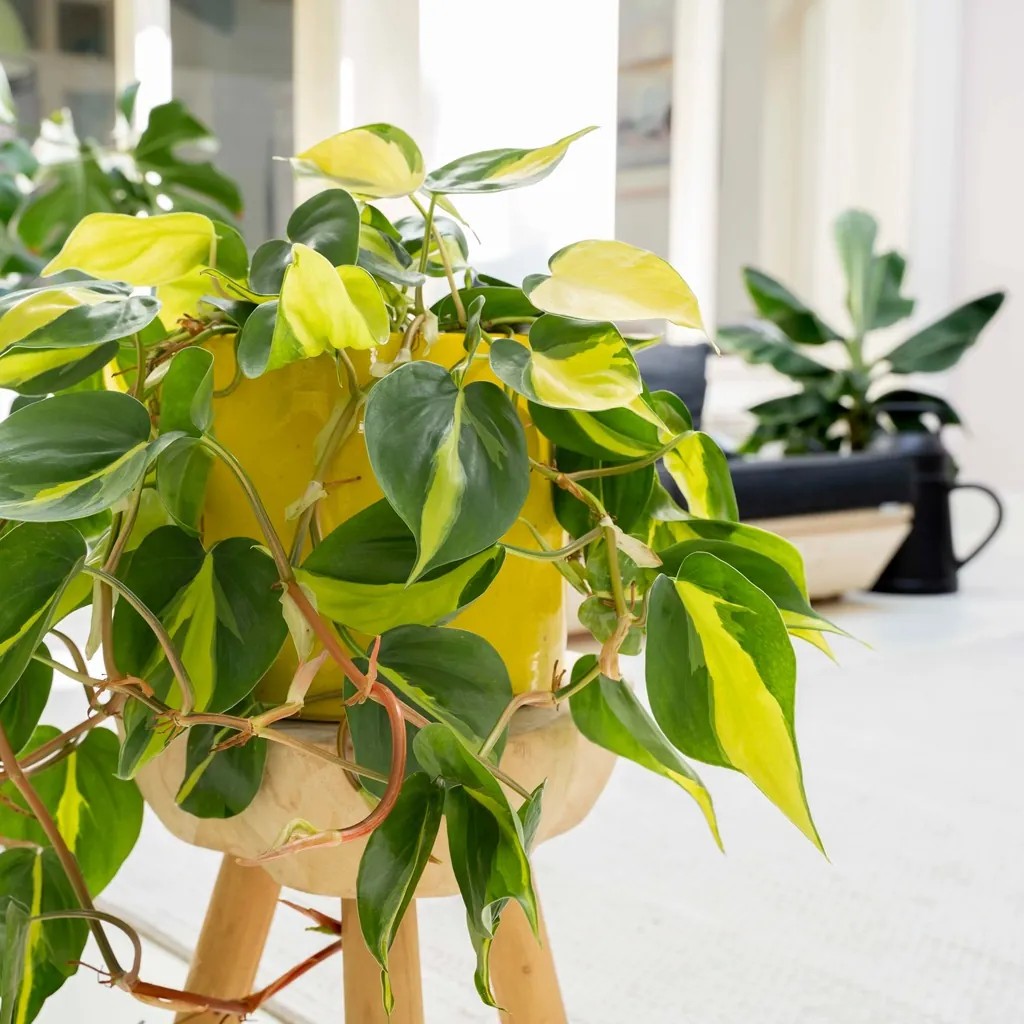
Philodendron brasil has fast-growing vines with yellow variegated leaves that form an interesting trailing pattern.
Some call it the “heart leaf” because of its leaves’ shape and patterns. If you choose this tropical plant, you’ll have a variety of colors to explore perfect to match with your living room’s color palette.
Dumb Cane (Dieffenbachia)
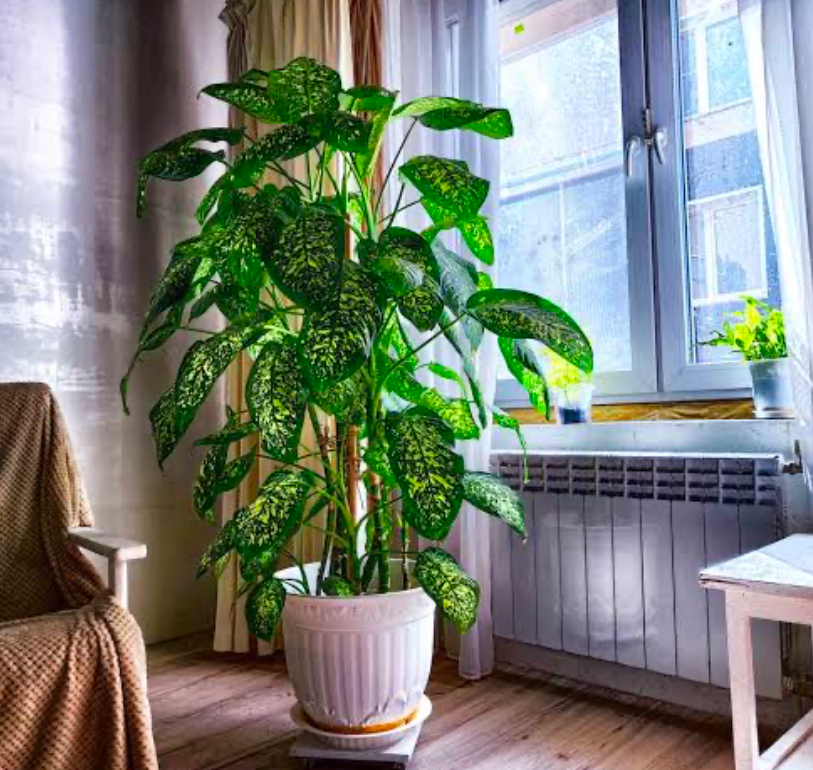
Finally, in the dimly lit corner category is the dumb cane plant also called the Leopard Lily with its bold, colorful leaves. It’s perfect for boring shaded corners that need a pop of color from its green and yellow leaves.
Tall Plants That Add Vertical Elegance
When you have a vast wall and high ceilings, it often feels like the space is empty unless you use specific vertical living room decor.
This section of the guide highlights tall indoor plants that make excellent focal points in empty and high-ceilinged living room corners.
Unimaginative people will call them space eaters and see them as nothing but oversized vegetation.
However, you’ll see a statement plant. A conversation starter. A decor that says, “I’m here! I’m bold and proud.
Some statement plants to help your personality shine through include:
Fiddle Leaf Fig (Ficus Lyrata)
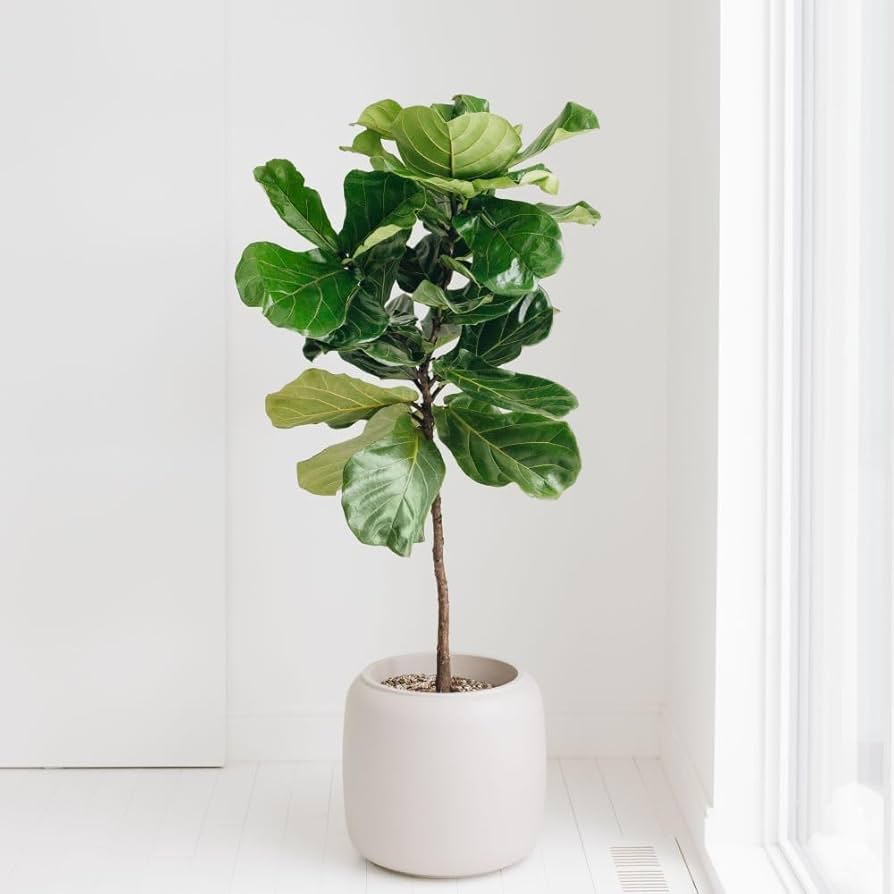
First up is the elegant fiddle leaf fig plant also called the banjo fig or lyre leaf fig tree with its dramatic violin-shaped leaves.
It’s one of the most popular varieties of tall plants for large living room corners, making it pricey but worth the value. Outdoors, in their native habitat (tropical West Africa), they can reach heights of 50 to 100 feet. Indoors, they typically grow to be between 6 and 10 feet tall. So be sure you have the vertical space before getting this plant.
Rubber Plant (Ficus Elastica)
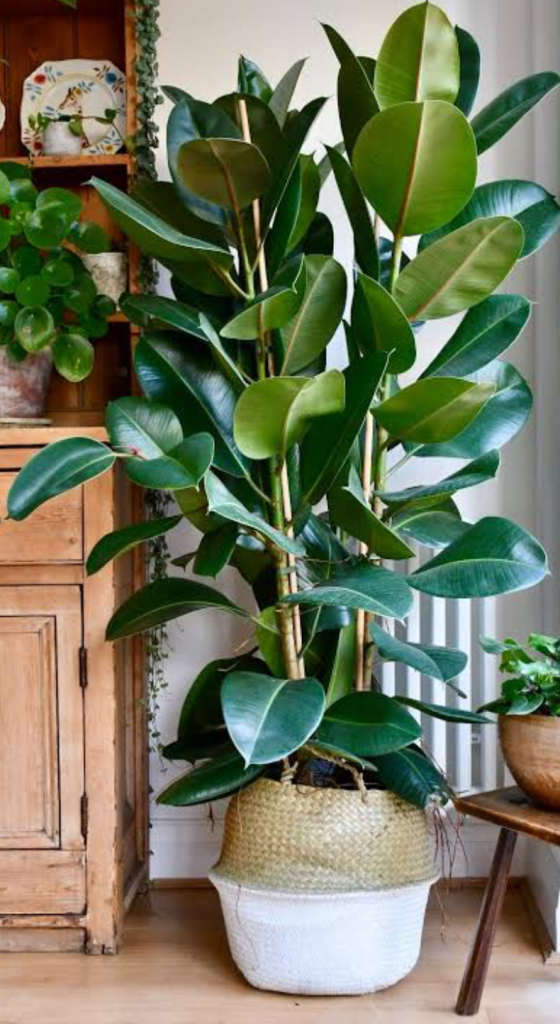
With thick, dark leaves that grow on thin, spread-apart stalks, the Ficus Rubber Plant also known as the rubber fig, rubber bush, or Indian rubber tree is a minimalist’s dream. This plant is known for being a relatively low-maintenance houseplant, and they don’t require vast amounts of horizontal space compared to some wider indoor trees.
They are also air purifying and can potentially improve air quality by removing toxins like formaldehyde. Keep in mind that indoors, they typically grow between 6 to 10 feet tall, while outdoors in their native habitat, rubber plants can reach heights of 50 to 100 feet.
Bird of Paradise (Strelitzia Reginae)

The dramatic bird of paradise plant is a colorful and bold tropical vegetation fit for those looking for centerpiece decor. It’s a popular choice for both indoor and outdoor gardens, adding a touch of the exotic with its unique blooms and lush foliage.
Its tropical foliage has a unique yellow banana leaf-like structure that typically reaches a mature size of 3.5-6 feet tall and 3-4 feet wide.
Areca Palm (Dypsis Lutescens)
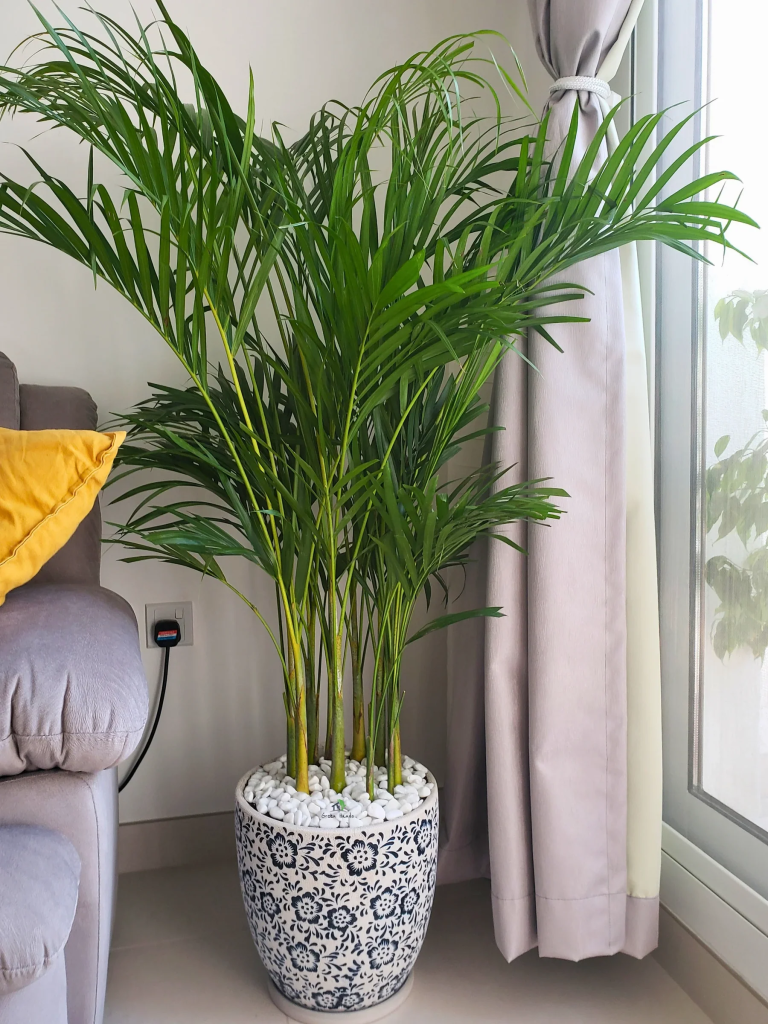
Create a haven and soften sharp edges by planting areca palms indoors. Its feathery leaves spread out in elegant fronds of lush, green foliage similar to bamboo shoots.
Beyond its beauty, areca palms offer numerous benefits, including air purification, humidity regulation, and aesthetic appeal. They are known for removing toxins like formaldehyde and xylene from the air, and their ability to release moisture helps combat dry air.
Indoors, they typically reach 6-8 feet, while outdoors they can grow to 15-30 feet tall. Areca palms are relatively low-maintenance and can enhance the look of any space!
Corn Plant (Dracaena Fragrans)

Dracaena fragrans, popularly called Corn plants, is a tropical flowering species with a unique structure. The corn plant decor creates visual appeal with its cane-like trunk and bushy leaves that grow upward and around its base.
As a houseplant, it typically grows to 4-6 feet tall, but it can reach over 6 feet in height. In its native habitat outdoors, it can reach 20 feet or more. And if you are lucky your corn plant might even bloom indoors, which produces fragrant white-yellow flowers.
Dracaena fragrans is known for its ability to filter indoor air pollutants such as formaldehyde, benzene, and trichloroethylene. And it is generally considered easy to care for and adaptable to various indoor conditions.
Bamboo Palm (Chamaedorea Seifrizii)
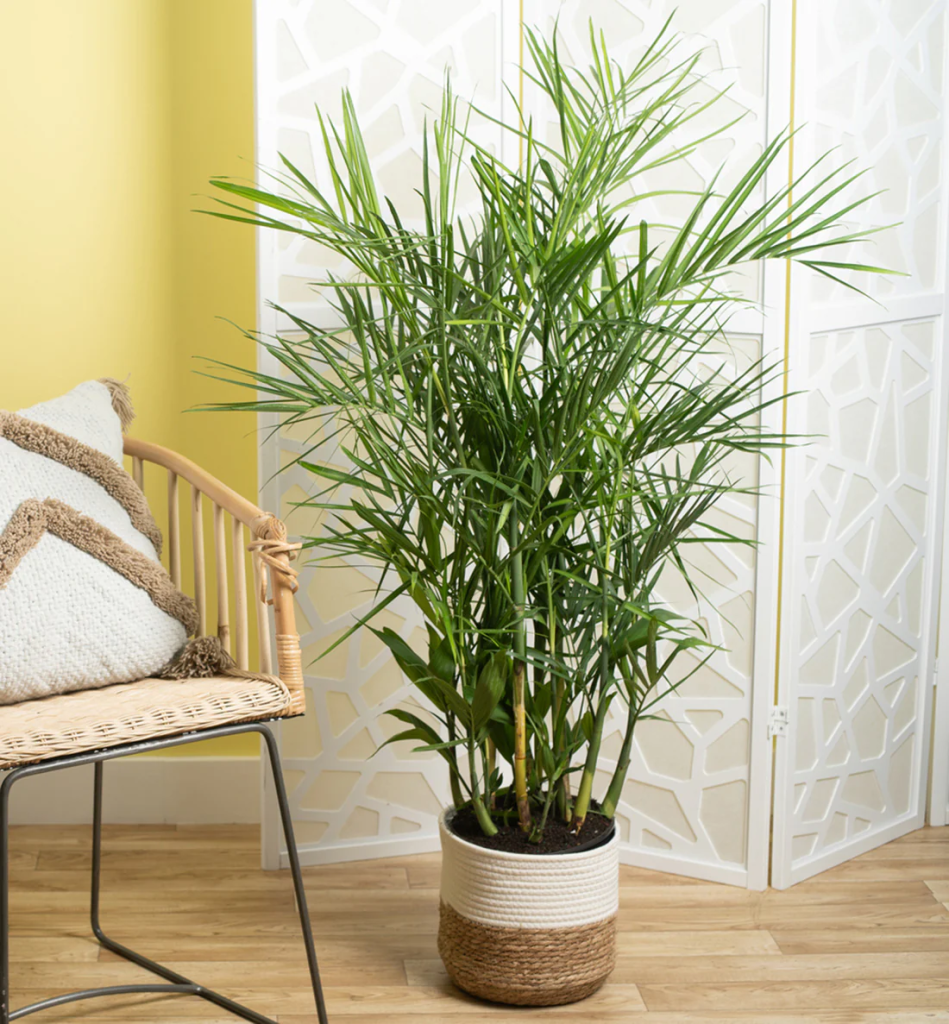
If you want to add a subtle tropical touch to your living room corner, get a Bamboo Palm also known as the parlor palm, or reed palm. It thrives with medium light, so even though it requires more attention than low-light variants, bamboo palm care is still easy.
Note, despite the name, it is not related to true bamboo plants. It is effective at removing indoor air pollutants, such as formaldehyde, xylene, and toluene. And typically grows 3 to 8 feet tall and 3 to 6 feet wide.
Parlor Palm (Chamaedorea Elegans)
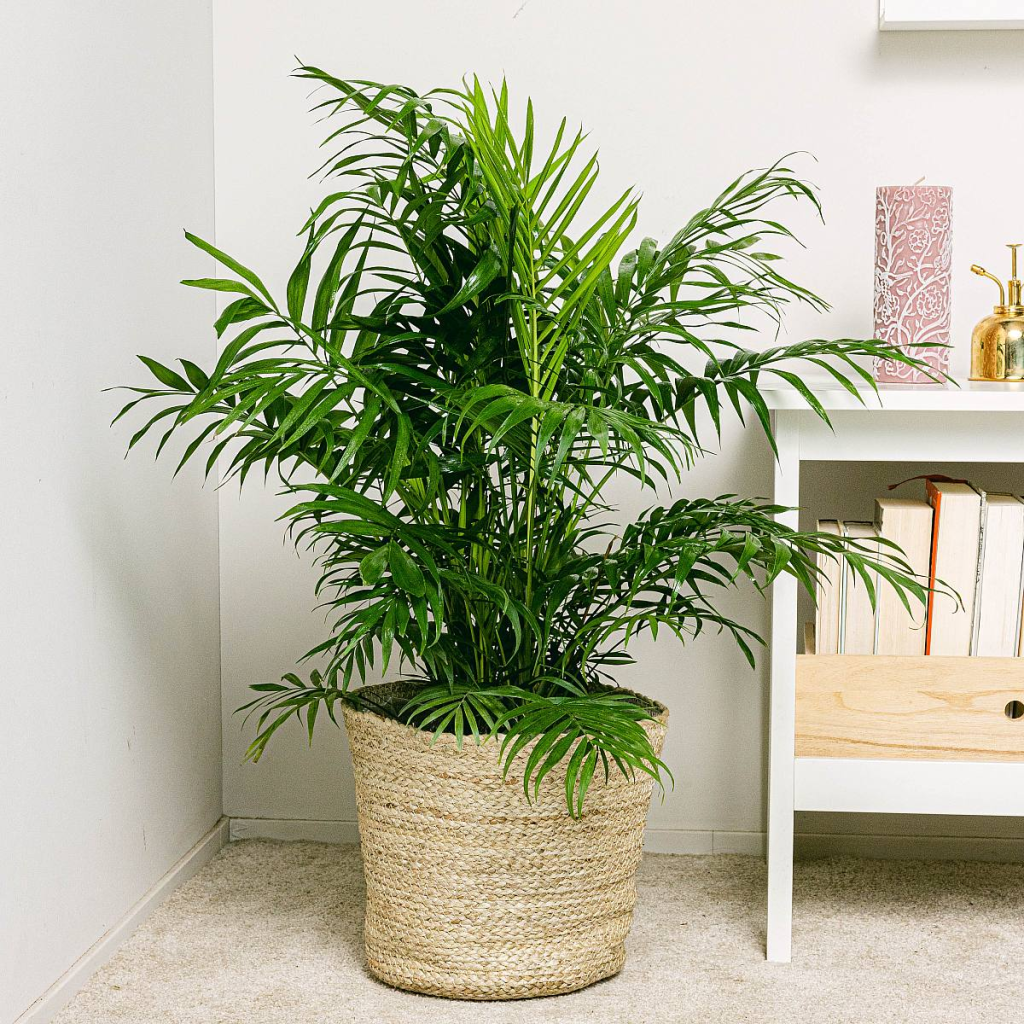
Lastly, because having a high ceiling doesn’t guarantee a large space, let’s explore a tall plant perfect for small corners. The parlor palm plant thrives in indirect light, common in cramped areas.
Parlor palms (Chamaedorea elegans) are typically smaller (reaching 2-6 feet), more compact, and slower-growing, often with a single stem. On the other hand, bamboo palms (Chamaedorea seifrizii) which are sometimes called parlor palms, have multiple stems that grow in a clumping, bamboo-like fashion and can reach a larger size.
Compact Plants for Small-Space Corners
Bringing nature indoors is a wonderful way to brighten your living space, and if you’re working with limited room, compact houseplants are ideal. Their small size allows them to effortlessly adorn tables, windowsills, or even the snuggest corners of your living room.
Imagine the joy of nurturing your green thumb without the worry of constant trimming to manage size! Compact plants offer a great way to bring nature indoors.
If you’re ready to cultivate your own indoor garden, here are some compact houseplants to consider.
Spider Plant (Chlorophytum Comosum)

Having a spider plant corner is a no-brainer for beginners. This common houseplant is easy to maintain and also reproduces baby plants (spiderettes) as a reward for your nurturing efforts.
Spider plants are known to help clean indoor air by absorbing harmful chemicals like formaldehyde, xylene, benzene, and carbon monoxide, though a large number of plants are needed for significant benefits. So be sure to replant those spiderettes by simply cutting them off the main shoot and potting them in moist soil.
Nerve Plant (Fittonia Albivenis)
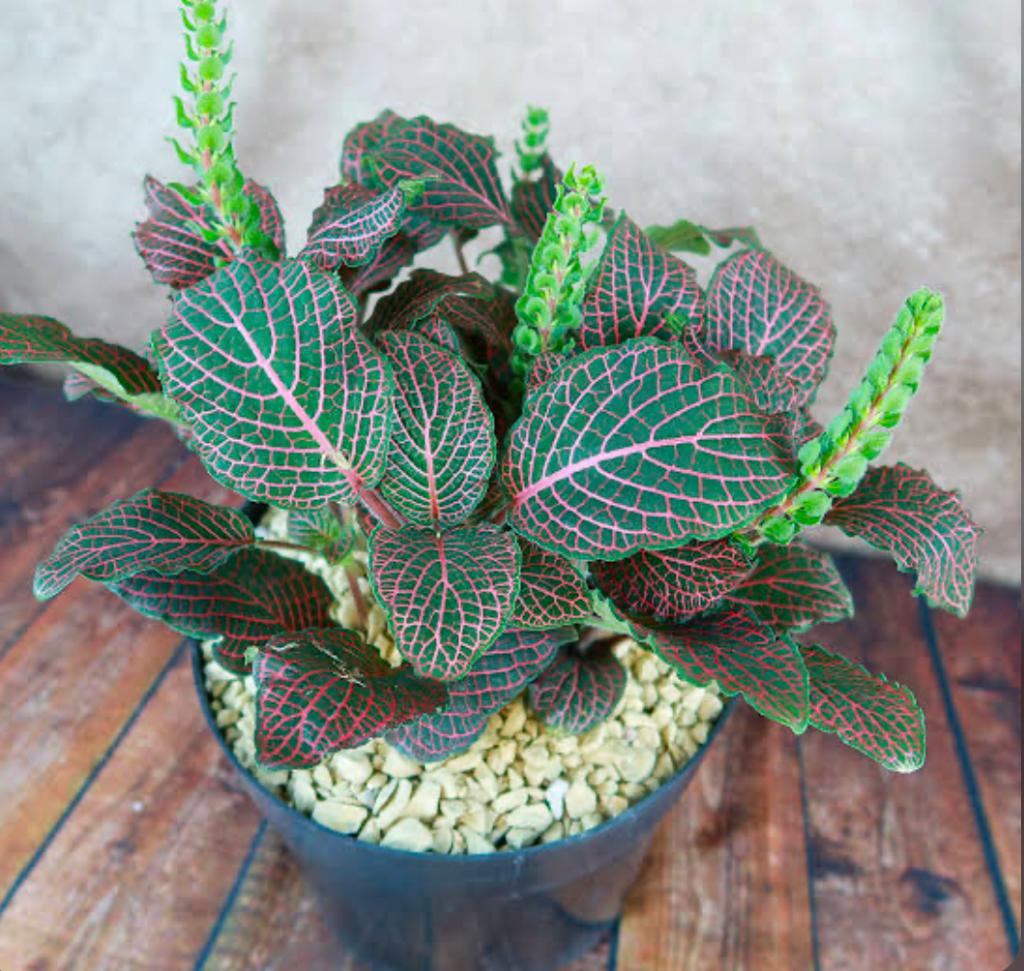
Nerve plants thrive indoors with bright, indirect light and high humidity. They prefer consistently moist, but not soggy, soil and temperatures between 60-80°F (16-26°C). Avoid direct sunlight, which can scorch their leaves, and sudden temperature changes, making them perfect centerpiece house plants.
Baby Rubber Plant (Peperomia Obtusifolia)
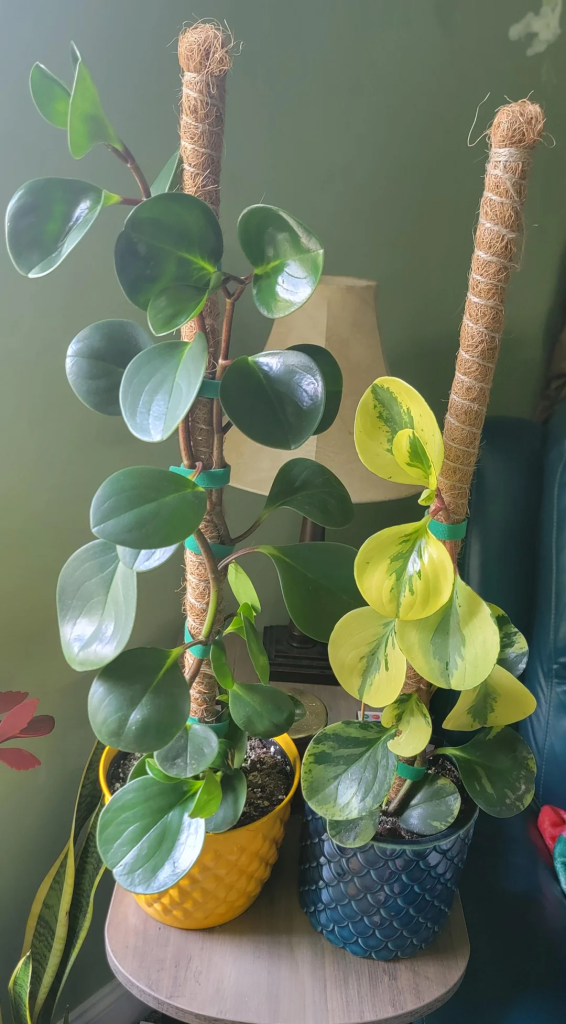
The baby rubber plant, also known as the American Rubber Plant, is a popular and easy-to-care-for houseplant appreciated for its attractive foliage and compact size. This plant only reaches heights of 6 to 12 inches (15 to 30 cm), making it ideal for desks, shelves, and other small spaces.
Prayer Plant (Maranta Leuconeura)

If you like an interactive environment, you’d love the prayer plant’s light dependency. This species has folding leaves and colorful patterns that grow in whatever direction light reflects and thrive based on the amount of light they receive.
The leaves exhibit a fascinating behavior called nyctinasty. During the day, they lie flat, and at night, they fold upwards, resembling hands in prayer, hence the name. This movement is thought to be an adaptation to conserve moisture and protect the leaves.
Mini Monstera (Rhaphidophora Tetrasperma)
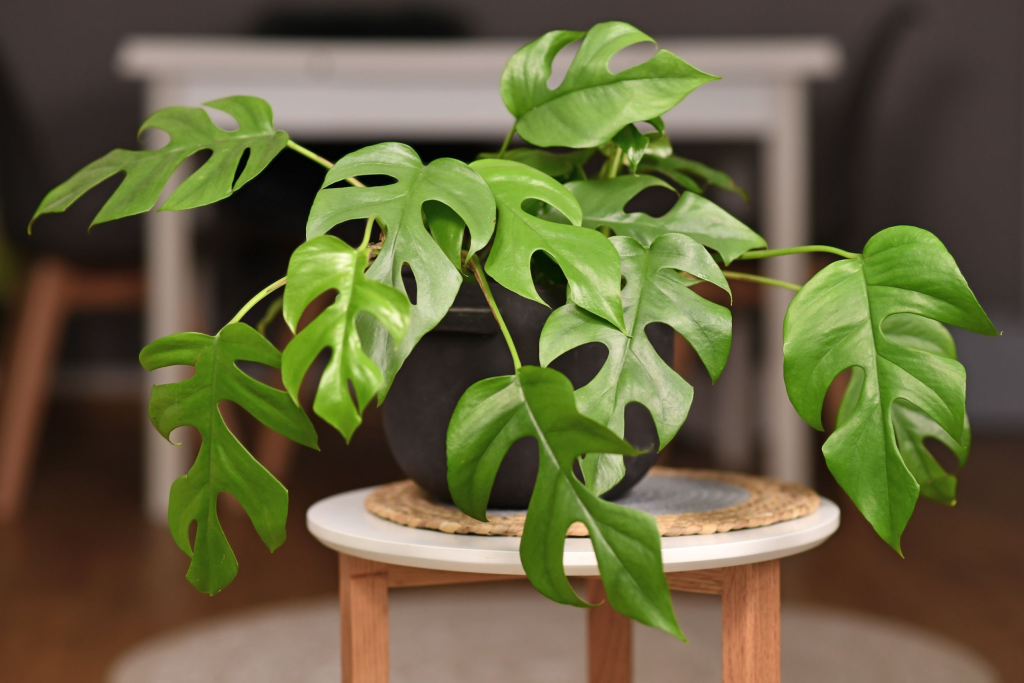
Give climbers a chance in your living room corner by decorating it with Mini Monstera, a toxic and compact lookalike of the larger Monstera deliciosa. Note that despite its common name, the Mini Monstera is not a true Monstera plant.
This vining plant that uses aerial roots to climb can grow up to 12 feet tall indoors, if allowed so prune away. Mini Monstera prefers bright, indirect light for 6-8 hours daily, but can tolerate lower light conditions, though growth may be slower. And it prefers humidity levels of at least 50-60%, which can be achieved through a humidifier or occasional misting.
Aloe Vera (Aloe Barbadensis Miller)

Planting aloe vera indoors is common for succulent lovers because of its multi-purpose fleshy leaves filled with gel used for medicinal, health, and cosmetic purposes.
As you can see Aloe Vera works overtime! Not only does it fit perfectly on corner shelves, side tables, and in small spaces but it can also be strategically harvested and used to promote health.
These plants are also extremely durable. I bought an Aloe Vera Plant while in college a very long time ago, I don’t remember doing much maintenance and eventually gifted that plant’s offshoots to family members as that one plant exploded into many. I recently visited my brother and he gifted me a clipping from the very plant’s offspring I gifted to him years ago.
Boston Fern (Nephrolepis Exaltata)

Finally, in this section, the Boston Fern indoor plant which has dense fronds that love humidity, making it perfect for cool corners. It branches out like an Areca palm, but it is a more compact option for small living room corners. Initially upright, their fronds gracefully arch as they mature, making them ideal for hanging baskets or elevated containers, more on this category up next.
Boston ferns are also known for their ability to filter out indoor air pollutants like formaldehyde and xylene, helping homes to improve indoor air quality.
Trailing and Hanging Beauties for Elevated Corners
Earlier in this guide, you saw some trailing indoor plants. Now it’s time to talk more about them. Hanging houseplants deserve the spotlight because they’re some of the most versatile species. You can place them on shelves, plant stands, hanging baskets in the corners, or any elevated surface.
These hanging beauties trail across your chosen surface and create a cascade of indoor vines that create a visually stimulating atmosphere.
So, here’s a look at some gorgeous trailing plants for your living room corner.
String of Pearls (Senecio Rowleyanus)

We’ll open with the string of pearls plant, the most popular hanging houseplant. It has cascading beads that form ornamental visions in hanging baskets, whether you hang them from the ceiling or on a corner shelf.
String of Pearls are relatively low-maintenance, requiring bright, indirect light, well-draining soil, and infrequent watering. their spherical leaves store water, and each leaf features a translucent “window” that allows sunlight to penetrate for photosynthesis, even in shaded conditions.
English Ivy (Hedera Helix)

English ivy is a popular houseplant known for its trailing or climbing vines and heart-shaped leaves. It’s relatively easy to care for indoors, preferring medium to bright indirect light and well-draining soil. While it can tolerate lower light conditions, insufficient light can lead to less vibrant foliage.
Velvet Leaf Philodendron (Philodendron Micans)

Bring texture and color into your space with Philodendron Micans. Its velvet-like leaves have a trailing growth pattern that is ideal for beginners and pro plant parents. Prune frequently to control the length of the vines and you can also propagate the cuttings in water or soil.
Velvet Leaf Philodendron thrives in bright, indirect light but can tolerate lower light conditions. However, do not place this plant in direct sunlight for extended periods as it’s prone to burns.
Wandering Jew (Tradescantia Zebrina)

Inchplant or wandering jew plant is a fast-growing species with striking purple-green stripes that’ll make a statement in any space. Its leaves are often described as velvety due to minute hairs and its stems can trail as long as 3 feet if not appropriately managed with regular pruning.
Tradescantia Zebrina prefers bright, indirect light. Be mindful of how much direct sunlight it receives as too much can scorch its leaves. This plant thrives in higher humidity, so misting the leaves with water is beneficial.
String of Hearts (Ceropegia Woodii)
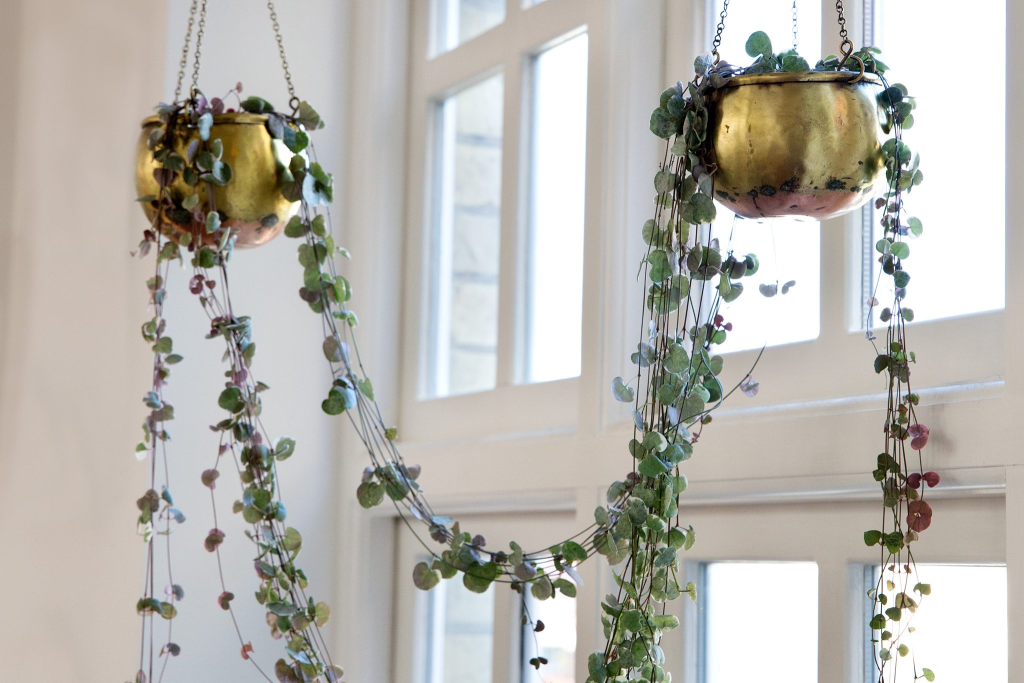
Have you ever seen a string of hearts vine plant? It’s a unique indoor hanging species that creates a romantic ambiance. This succulent is known for its delicate, heart-shaped leaves and easy care requirements despite having long, thin vines, this hanging plant is resilient. Its vines can grow quite long, sometimes reaching up to 12 feet in length.
Burro’s Tail (Sedum Morganianum)
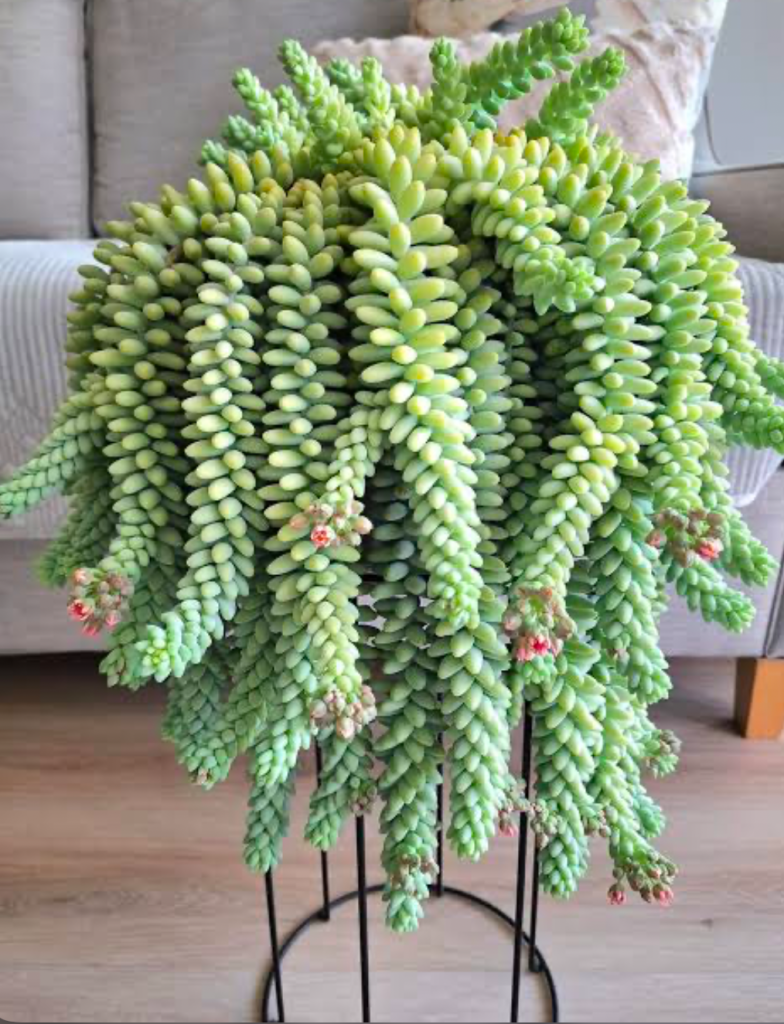
We’ll close this section with a chunky succulent, the Burro’s tail indoor plant, sometimes called Donkey’s Tail. This plant features long, cascading stems densely covered with plump, teardrop or jelly-bean shaped leaves that are typically blue-green. The leaves are spirally arranged and overlap, creating a braided appearance, making it a beautiful centerpiece plant in any room.
Like most succulents, it’s highly drought-tolerant, thanks to its fleshy leaves that store water. It prefers bright, indirect light or partial sun, but be mindful not to allow it to get too much direct light. And do not over water as it can lead to root rot.
Pet-Safe Plants for Peace of Mind
If you have animals in your home, then you can relate to needing pet-safe houseplants. Of course, you don’t want to miss out on elevating your interior with plants because of your beloved pet.
So, these non-toxic indoor plants in the upcoming sections ensure safety without compromising style and health. This specially curated list contains plants safe for cats and dogs, the most common housepets. They’re also ideal for your living room corners, whether as standing or hanging decor. You’ll see some plants we’ve highlighted earlier with new options, so let’s get started.
Peacock Plant (Calathea Makoyana)
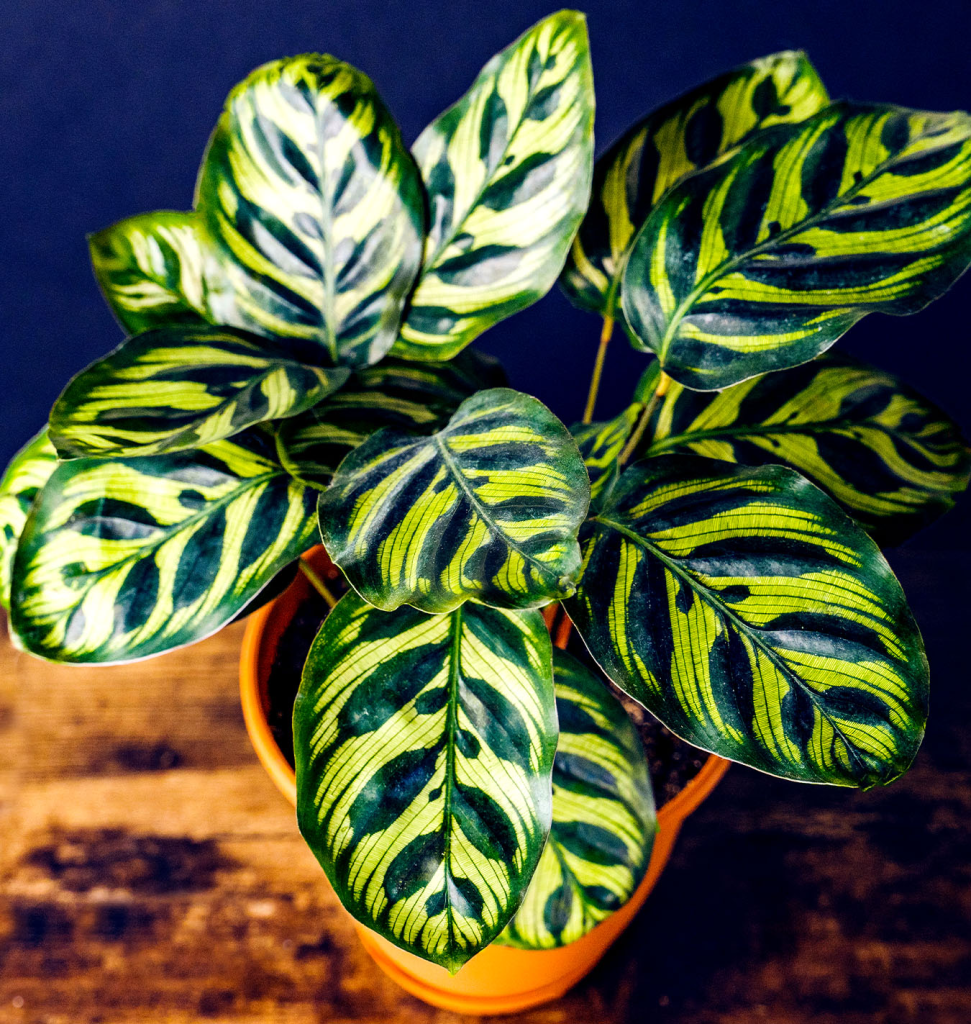
If you have a checklist of the perfect houseplant for animals, the Peacock Plant fits the bill. What makes a Calathea pet safe and ideal decor piece?
Well, the Calathea Makoyana is appreciated for its striking foliage with its name coming from the intricate patterns on its broad, oval leaves, which resemble the vibrant “eyes” of a peacock’s feather. And it’s of course non-toxic, even able purify the air in your home.
Spider Plant (Chlorophytum Comosum)
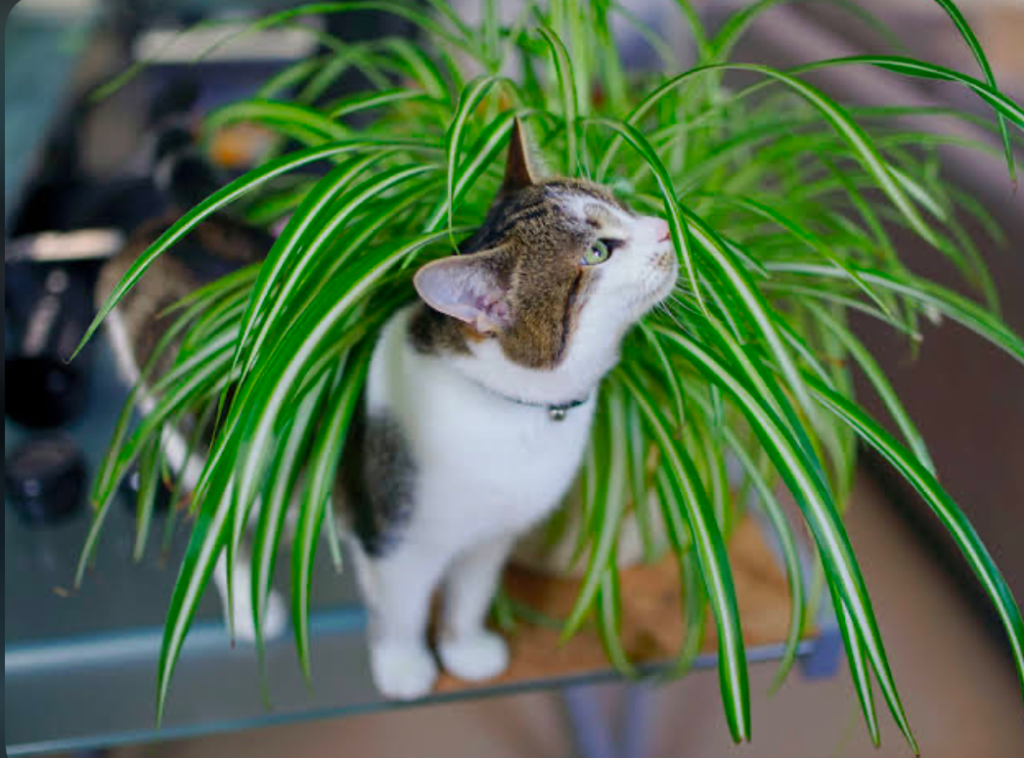
Once again, we have the compact and pet-safe spider plant. Its thin striped leaves also release air-purifying oxygen and are easy to maintain. It’s a low maintenance plant with fast-growing babies that always guarantee clean air.
Bamboo Palm (Chamaedorea Seifrizii)

What makes bamboo palm pets safe? Its leaves are generally non-toxic, but its fruits are poisonous and may cause stomach upset. Besides the mild non-life threatening sickness from eating its berries, Bamboo Palm is a popular pet-friendly, and as previously mentioned, tall houseplant.
Prayer Plant (Maranta Leuconeura)
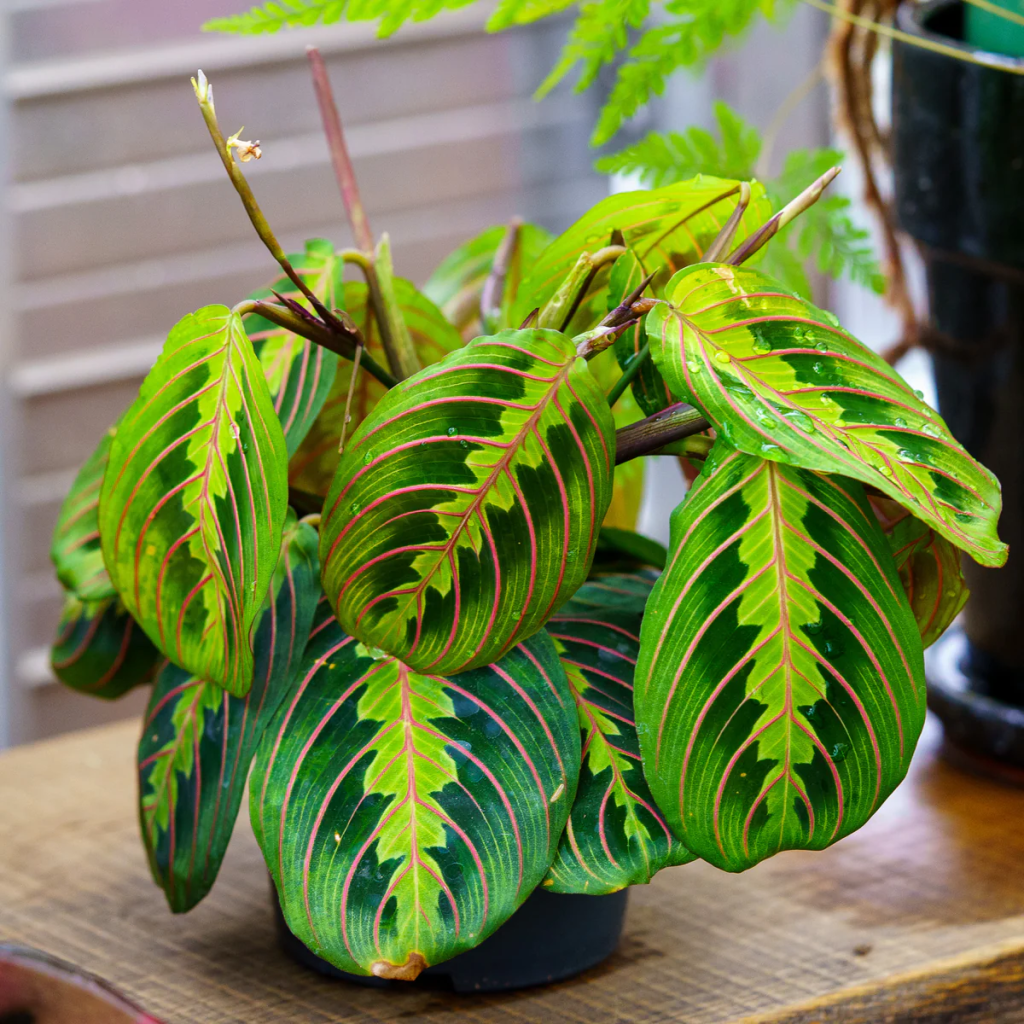
Another familiar favorite is the colorful, compact, and pet-safe Prayer Plant. Why is the prayer plant safe for pets? Because ingesting it isn’t fatal to them. While they are safe for pets to be around, it’s still recommended to prevent them from excessively chewing on or ingesting the leaves, as it could cause mild digestive upset like vomiting or diarrhea.
African Violet (Saintpaulia Ionantha)

The African Violet is a popular low-maintenance houseplants known for their vibrant, colorful blooms and velvety leaves.
African violets are generally considered safe for pets. The ASPCA confirms that they are non-toxic to dogs and cats. While they are safe, it’s still a good idea to monitor your pets around any plant, as excessive consumption could potentially cause mild gastrointestinal upset.
Unique & Decorative Plant Picks for Corner Drama
To wrap up this colorful houseplant for the living room corners guide, let’s discuss eye catching and bold vegetation that serves as a decorative accent. So far, all the unique indoor plants we highlighted are visually compelling while serving other purposes, but the plants in this category are often at the top of the list as decor first before any other function.
You can make any of the 33 indoor plants listed so far your decorative accents, and they’d do the job all right or choose one of these decorative corner plants.
Swiss Cheese Plant (Monstera Deliciosa)
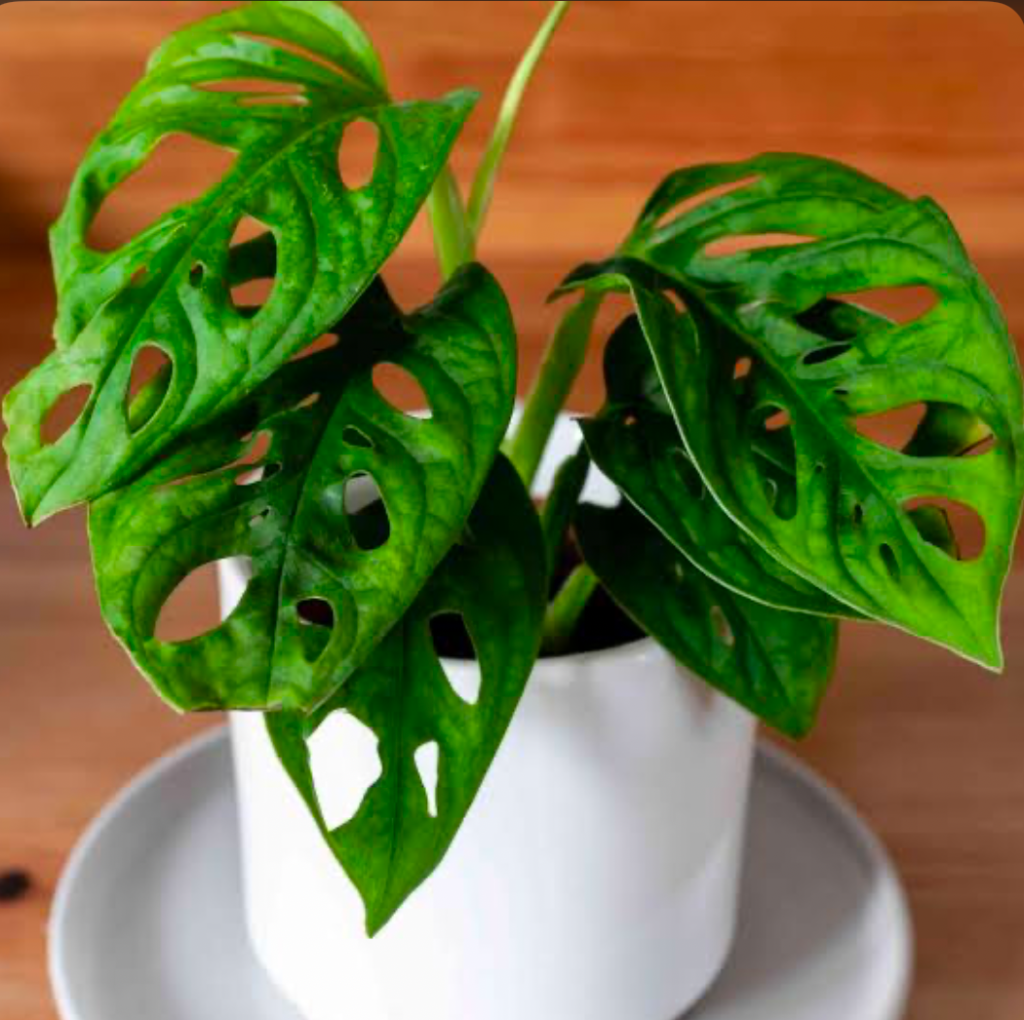
The Swiss cheese plant, or Monstera deliciosa, has natural holey leaves that look like cheese slices drilled by rodents. However, this unique leaf design makes your monstera deliciosa corner a dramatic focal point.
Croton (Codiaeum Variegatum)

Finally, we’ll close our top 35 list with the branching bushy shrub Croton houseplant. Its vibrant multicolored foliage creates a bold visual impact that highlights even the dullest space.
Conclusion
You now have all the details on choosing indoor plants for your living room corner. Remember, it’s more than just liking a plant’s look but also considering all the essential elements, like
- Your schedule
- Available space
- Lighting
- Pet safety
- Aesthetic
Experiment with as many living room plant ideas as you can. Explore several themes and make combinations of tall, compact, and trailing varieties for visual impact.
Overall, when you decorate corners with greenery, ensure you make it personal. Let it reflect the aura of the occupant and tells a story.
Be sure let us know which of these beauties is your favorite in the comment section below.


